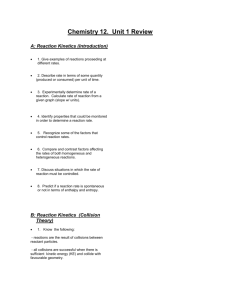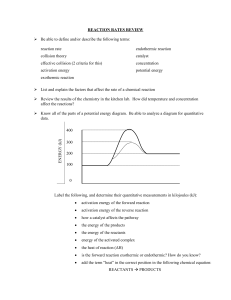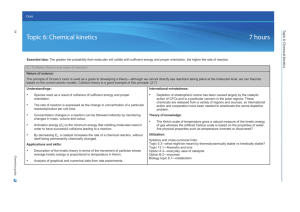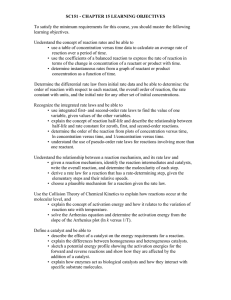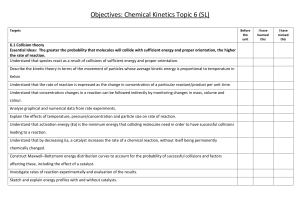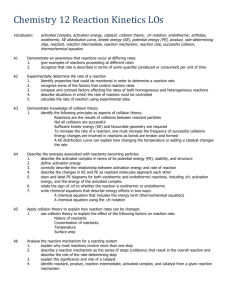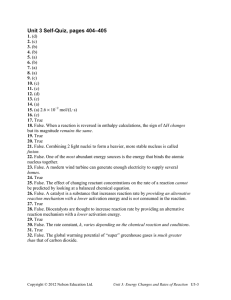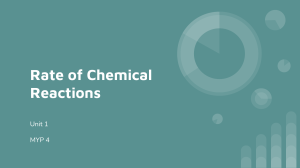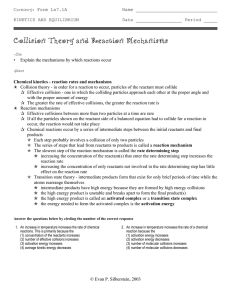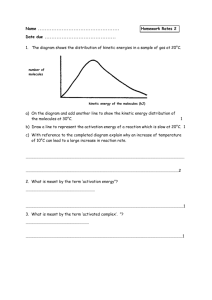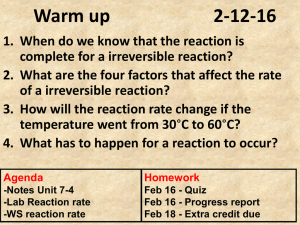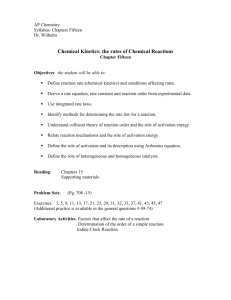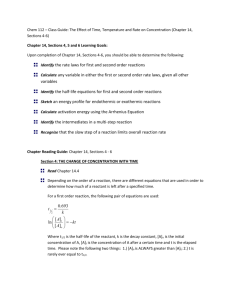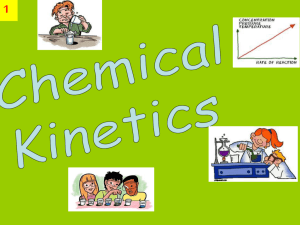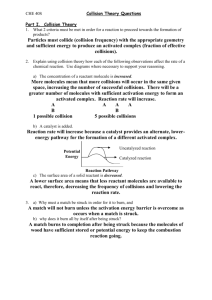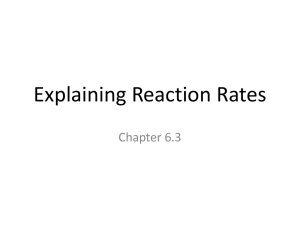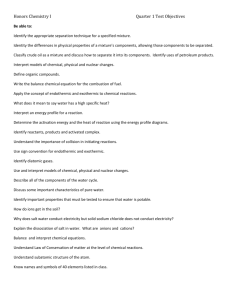Chemistry 12 Prescribed Learning Outcomes (PLO's)
advertisement
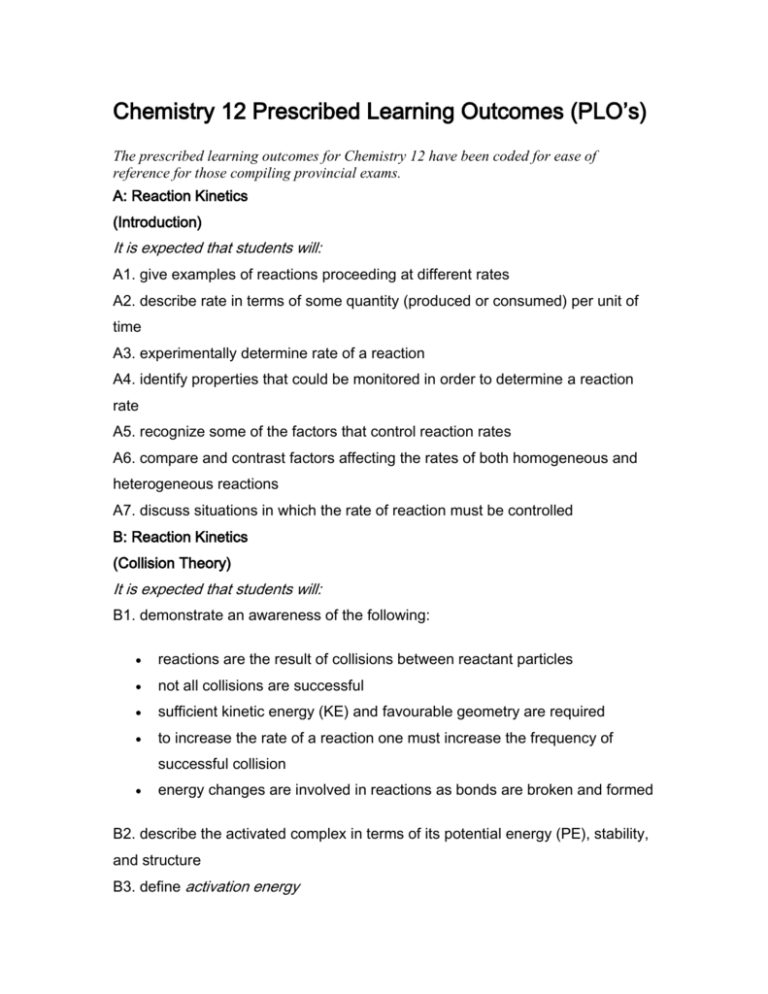
Chemistry 12 Prescribed Learning Outcomes (PLO’s) The prescribed learning outcomes for Chemistry 12 have been coded for ease of reference for those compiling provincial exams. A: Reaction Kinetics (Introduction) It is expected that students will: A1. give examples of reactions proceeding at different rates A2. describe rate in terms of some quantity (produced or consumed) per unit of time A3. experimentally determine rate of a reaction A4. identify properties that could be monitored in order to determine a reaction rate A5. recognize some of the factors that control reaction rates A6. compare and contrast factors affecting the rates of both homogeneous and heterogeneous reactions A7. discuss situations in which the rate of reaction must be controlled B: Reaction Kinetics (Collision Theory) It is expected that students will: B1. demonstrate an awareness of the following: reactions are the result of collisions between reactant particles not all collisions are successful sufficient kinetic energy (KE) and favourable geometry are required to increase the rate of a reaction one must increase the frequency of successful collision energy changes are involved in reactions as bonds are broken and formed B2. describe the activated complex in terms of its potential energy (PE), stability, and structure B3. define activation energy B4. describe the relationship between activation energy and rate of reaction B5. describe the changes in KE and PE as reactant molecules approach each other B6. draw and label PE diagrams for both exothermic and endothermic reactions, including H, activation energy, and the energy of the activated complex B7. relate the sign of H to whether the reaction is exothermic or endothermic B8. write a chemical equation including the energy term (given a H value) and vice versa B9. describe the role of the following factors in reaction rate: nature of reactants concentration temperature surface area C: Reaction Kinetics (Reaction Mechanisms and Catalysts) It is expected that students will: C1. use examples to demonstrate that most reactions involve more than one step C2. describe a reaction mechanism as the series of steps (collisions) that result in the overall reaction C3. define catalyst C4. compare and contrast the PE diagrams for a catalyzed and uncatalyzed reaction in terms of: reaction mechanism H activation energy C5. identify reactant, product, reaction intermediate, and catalyst from a given reaction mechanism C6. describe the uses of specific catalysts in a variety of situations
